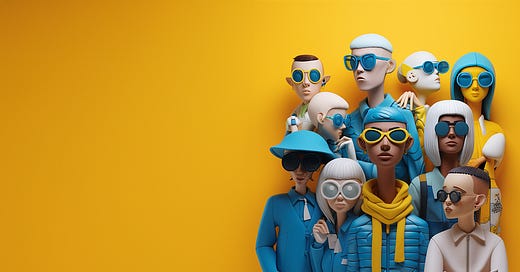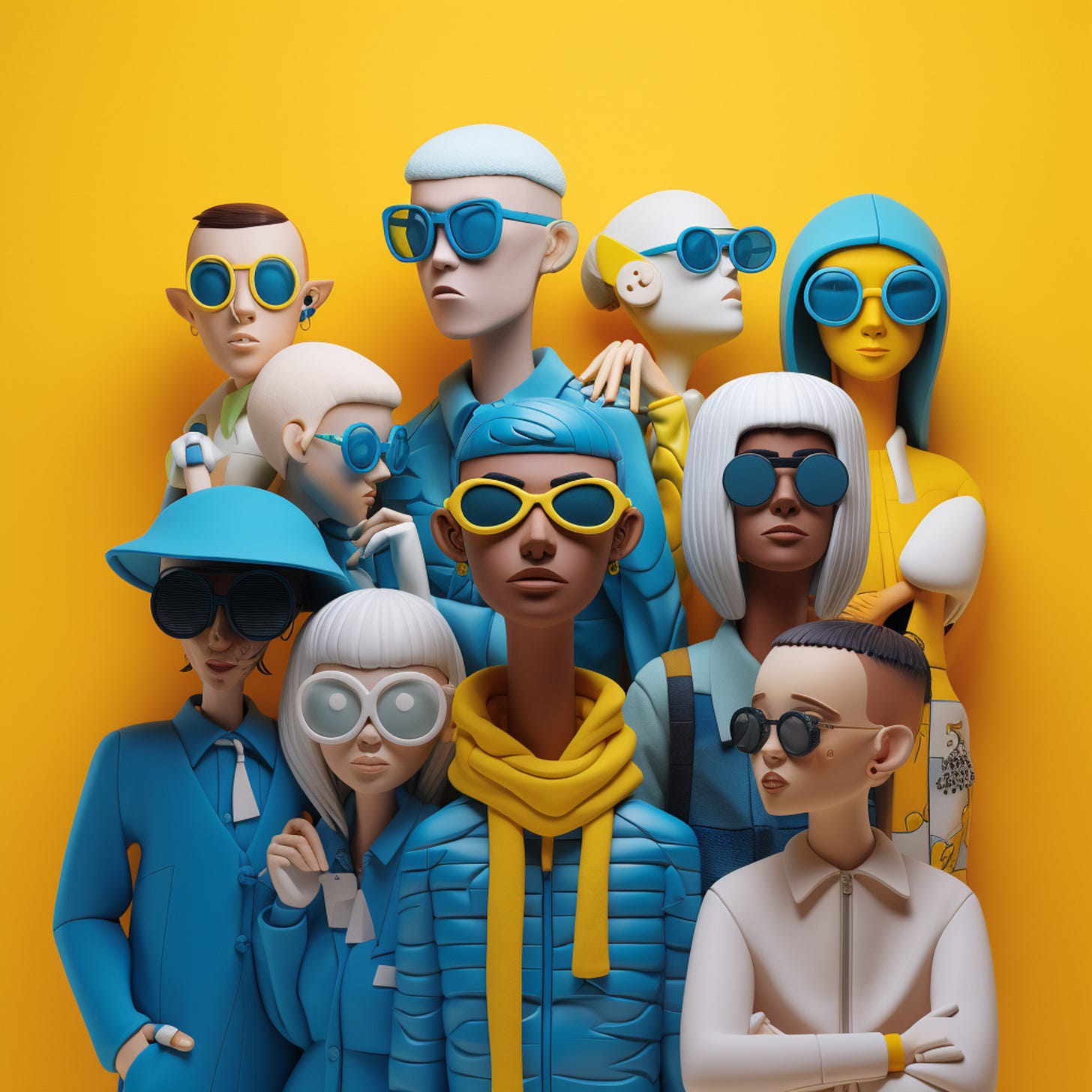In last publication, I covered the psychology behind creative decisions, how logic, intuition, and emotional states guide our individual processes. But even if you master that solo side, there’s another dimension you can’t ignore: collaboration.
It might seem contradictory at first to think that working with others could actually enhance your unique “creative spark,” yet the majority of creative professionals across nearly every field do their work in studios, firms, agencies, or alongside collaborators with different skill sets. Even those who are solo creators frequently team up at some point to take their ideas to new heights.
This article explores the powerful ways collaborative environments can elevate your creativity, why some group efforts fail, and how Unikcracy is designed to help you avoid common pitfalls. If you’ve ever felt energized by a brainstorming session or been stuck in a pointless group meeting, you’ve already witnessed both the pros and cons of collaboration in action. The good news is that you can shape those experiences for the better, and it might be easier than you think.
Why Collaboration Turbocharges Creativity
When we talk about creativity, we often picture lone geniuses, the designer who sketches in a dark room or the novelist typing away in a silent cabin. The truth is that creative breakthroughs often emerge with at least some collective input. Even a single colleague’s feedback can transform a piece of work from “interesting” to “unforgettable.”
The single biggest advantage of collaboration is diversity of thought. People from different backgrounds, skill sets, and professional experiences bring angles you would never consider on your own. A brand strategist might view a visual problem differently than a graphic designer. An industrial engineer might see solutions a digital creator could never guess. This cross-pollination shakes up the mental inertia in your own thinking.
Working alone can lead to procrastination, doubts, or a lack of momentum. In a collaborative environment, you’re responsible for your part, and you know others are counting on you. That shared excitement feeds your creative energy, especially on days when your “muse” seems absent.
Not everything has to sit on your shoulders. If you’re stuck on a technical detail, you can lean on a teammate who excels in that area. By pooling expertise, you spend less time guessing and more time on the ideas that truly inspire you.
Creativity is emotional, as we already know. Feedback can confirm you’re on to something or, kindly, show you where to pivot. That validation boosts confidence at crucial moments. It’s easier to be bold when at least one person is cheering you on.
The Potential Pitfalls
Of course, collaboration isn’t always a straightforward blessing. We’ve all seen projects collapse into chaos from conflicting egos or unclear goals, or we’ve endured meetings that generate no real insights. Recognizing these challenges helps you cultivate a more successful collaborative space.
Some teams become too harmonious, stifling creative tension to “keep the peace.” When nobody wants to rock the boat, you end up with watered-down ideas. True innovation often arises from respectful disagreement, where people feel safe enough to suggest something radical or question popular assumptions.
An overly large or unfocused team is another risk. Without structure, you can drown in repetitive or half-baked proposals. Big teams also tend to form subgroups that clash or ignore each other.
Ego battles can be the death of creativity. If one or two voices dominate, quieter but equally brilliant participants might retreat, leading to a sense of “this is just what we’re doing” instead of genuine buy-in. Enthusiastic people can still deliver nothing if nobody understands the objective. Without a clear goal or brief, discussions rambles, deadlines slip, and precious energy dissipates.
Once you’re aware of these pitfalls, you can build a plan to avoid them. This is where intentional design of collaborative environments comes into play.
Shaping Collaborative Spaces for Success
The difference between a dysfunctional team and a dream team often boils down to a few essentials.
It might sound obvious, but so many group projects begin with a vague idea of success. Defining what you want to achieve, why it matters, and who the audience is keeps everyone on track and avoids pointless tangents.
There also has to be an emphasis on psychological safety. If people fear being ridiculed or shut down, they won’t share riskier, more creative ideas. That can mean letting someone finish a wild pitch before anyone critiques or ensuring no one hogs the spotlight.
Constructive feedback loops are vital. Immediate, relevant feedback that aims to help, rather than embarrass, makes group members feel supported. This means being honest about weaknesses but also celebrating small wins.
Flexibility and iteration are equally important. Creativity is rarely linear, so letting the team propose, refine, evaluate, and pivot as needed keeps things organized without losing spontaneity.
The Emotional Side of Group Flow
Group flow is that moment when a team’s synergy reaches a deeper wavelength and every idea builds on the last. It’s not just about splitting tasks; it’s about forging emotional alignment that brings out everyone’s best.
People must truly care about the project, or the entire rhythm halts if one or two participants check out. Passion cannot be forced, but it can be encouraged by letting collaborators shape the final outcome so they feel invested. Trust in each other’s expertise is also crucial. If certain voices overshadow others, or if someone is suspected of not holding their weight, unity crumbles.
Inviting half-formed ideas can be a game-changer because a raw concept might flourish once the group embraces it with curiosity. Letting different people lead from time to time can refresh viewpoints, and smaller milestones help keep progress visible and morale high. Simple positivity also goes a long way, whether it’s words of praise or shared laughter during a demanding stretch. In this sense, collaboration is more than a division of tasks. It is an evolving social contract founded on shared goals, mutual respect, and a collective willingness to experiment. Under those conditions, group flow becomes achievable, and the result is a creative spark that feels effortlessly shared by everyone.
Empowering Cross-Pollination
Collaboration is not a magic wand, nor is it groupthink. It involves harnessing different minds to produce what no single individual could. Like any skill, it demands conscious effort, the right culture, and a willingness to push past discomfort when new perspectives clash with your own.
Whether you’re at a home studio or bouncing between coffee shops, it’s easy to miss the sparks that come from genuine creative interaction. You might ask, “Where do I even find people who get my vision?” There are many ways to discover potential collaborators. You can join online forums, attend meetups, follow relevant hashtags, or reach out to professionals in entirely different fields (the interior designer who contacts a 3D artist, or the songwriter who pairs with a videographer). Blending two varied approaches can lead to spectacular outcomes.
But essentially, that is why Unikcracy exists, to help creatives form cross-disciplinary connections without the endless scrolling or confusion of juggling multiple online groups. Instead of acting as just another social network, it fosters genuine interaction and encourages you to quickly connect with professionals who offer complementary skills.
Unikcracy focuses on education and community. By publishing in-depth articles, podcasts, and videos, it provides a creative knowledge base that can spark new ideas and serve as a conversation starter. Think of it as a communal library. You can dip in whenever you need fresh motivation or knowledge, and you can share articles or episodes with peers who have similar interests.
Through Substack, Unikcracy offers an easy first step to connect, but it is evolving into a creative club where members will be able to collaborate in real time, participate in live sessions, and propose strategies or projects for group feedback. This approach emphasizes authentic, strategic connections rather than chasing superficial likes. Structured discussions, interactive events, and curated content ensure that each interaction brings you closer to the creative synergy everyone seeks.
Quick Reminder
Special April Launch Offer (£5/month)
Ready to join a creative community?
You can subscribe for free on Substack for a weekly publication.
If you’re eager to supercharge your creativity with in-depth articles, take advantage of our special premium launch offer for just £5/month during April. From May onward, the price rises and premium exclusive content becomes only available to paid subscribers.
Lock in Your Launch Price & Subscribe Now for £5/month!
Offer ends April 30, don’t miss out!
Join the alliance of creatives.
Gerard Puxhe
Founder, Unikcracy
Creative Lead, Designer, Educator













Share this post